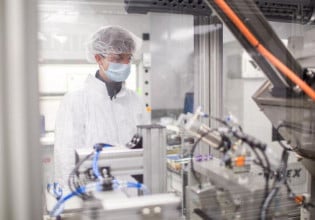An innovative nano-battery technology developed at Tel Aviv University for fast charge/discharge batteries could provide an alternative source of power for mobile devices, without the fire hazards associated with current lithium-based batteries.
In recent years, battery technology has not kept up with advances in semiconductor technology. As a result, batteries have become the weakest link in the operability of electronic devices. The growth in power-hungry mobile devices in the marketplace, however, means that manufacturers must substantially increase battery running time by packing more and more power into tighter packages. Moreover, end-users are becoming impatient with the amount of time needed to charge these high power batteries, resulting in a need to design quicker charging devices. These two characteristics – capacity and speed – have resulted in the development of heavily Li-loaded batteries that are operated at high temperatures which pose a fire hazard. When overheated, Li Ion batteries can burst into flames and pose a major risk to users. Recently, Dell Inc., a leading US computer company, has recalled a certain class of its Sony-made laptop batteries because of the danger of overheating and fire hazard.
Now, new nano battery technology developed by research teams led by Prof. Menachem Nathan of the Tel Aviv University's Fleischmann Faculty of Engineering and by professors Emanuel Peled and Dina Golodnitsky of the University's School of Chemistry, could eliminate this fire hazard by preventing overheating. The new device comprises a substantial number of miniature batteries, about 30,000 on an area as small as one square-centimeter, all connected in parallel. This architecture provides a high output of electrical power, without the risk of overheating, a major cause of flammability in laptop computer and other mobile batteries.
Professors Nathan, Peled and Golodnitsky have developed a solution that combines the low internal resistance characteristics of a thin film battery with the high capacity of regular chargeable lithium batteries. Using ingenuous and proprietary coating technologies, tens of thousands of miniature lithium batteries are laid out in parallel within a half mm thick non-conducting substrate. The substrate volume is thus used to increase charge capacity per footprint, up to 10mAh/cm squared, more than 80 times over similar-area, similar cathode thickness planar thin film batteries. Such nano-battery assemblies were tested in the lab for hundreds of charge/discharge cycles without loss of capacity and stability.
An extensive patent portfolio covers the Tel Aviv University nano-battery technology worldwide. The technology is available for licensing through Ramot at Tel Aviv University, the technology transfer arm of the university.






